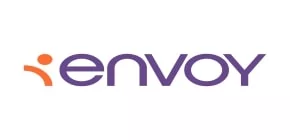- within Immigration topic(s)
- in United States
The H-1B visa is perhaps the most popular option for employers to sponsor foreign national employees to work in the U.S. However, the number of H-1B visas available in the U.S. each year is limited to 65,000 for regular petitions and an additional 20,000 for individuals with an advanced degree from a U.S. university.
In the latest H-1B electronic registration process, U.S. employers submittedover 300,00 H-1B registrations. Given the high demand for H-1B visas and limited number available, employers may need to consider alternative visa options to get their foreign national employees into the U.S. to begin work.
We took a closer look at some of the most common alternatives to the H-1B visa for work authorization in the U.S. Individuals may be eligible for certain H-1B visa alternatives based on their country of origin or profession.
Five common alternatives to the H-1B visa
1. TN Visa
The TN visa is an employer-sponsored visa available exclusively to Canadian and Mexican nationals. It allows certain professionals from both countries to work in the U.S. in a variety of designated occupations, including engineers, computer systems analysts and architects, among others.
The initial validity period for a TN visa is three years. Unlike the H-1B and other employer-sponsored visas, TN visa holders can apply for unlimited renewals, which are each granted in three-year increments.
Requirements for the TN visa are different depending on the applicant's home country. For more details on the processes for Mexican and Canadian nationals, download our TN visa guide.
2. O-1 Visa
The O-1 visa is for accomplished individuals who are recognized nationally or internationally as extraordinary or outstanding in their field. It is popularly known as the visa granted to nationally and internationally recognized individuals in the sciences, arts, education, business and athletics fields, as well as to outstanding researchers.
To be eligible for an O-1 visa, an individual must be considered a "person of extraordinary ability or achievement." O-1 visa recipients are experts, and they are often among the most elite in their professional field. Individuals can establish their eligibility for an O-1 visa by demonstrating exceptional achievements, honors and awards received in the field of interest. Dependents, such as children and spouses, may also be eligible to receive a derivative visa, called the O-3 visa. The O-1 visa may be granted for an initial period of up to three years. Individuals may then seek one-year or three-year extensions indefinitely after the initial stay three-year period.
3. Treaty Visas
There are several types of treaty visas available as an alternative to the H-1B. Two popular options are the E-1 and E-2 visa, which arenonimmigrant visas for temporary employment in the U.S.
The E-1 visa allows nationals from a treaty country, which is a country that has a treaty of commerce and navigation with the U.S., to be admitted to the U.S. to engage in international trade.
The E-2 visa also requires an investment treaty between the U.S. and the visa applicant's country of citizenship. It allows individuals to enter the U.S. to manage a business if they have invested a substantial amount of capital in a U.S. business, including a newly founded business. Certain managerial and essential employees of foreign companies may also qualify for E-1 and E-2 classification.
Requirements vary for both types of E visas. Learn more about the E visas in our downloadable guide.
4. E-3 Visa
The E-3 visa is available exclusively for Australian citizens to work in the U.S. in a specialty occupation. There is an annual limit of 10,500 E-3 visas. However, Australia does not typically fulfill that allotment. This allows employers to seek E-3 visas for Australian employees and candidates year-round.
Unlike the H-1B visa, the initial application for the E-3 visa bypasses the USCIS petition process. Individuals may apply for E-3 visas directly at a U.S. consulate abroad.
Finally, E-3 visas are issued in two-year increments and can be renewed indefinitely. The principal E visa holder may also bring dependents from their country of origin to the U.S. for business and employment purposes.
5. L Visa
The L visa can be an effective alternative to the H-1B for U.S.-based companies with offices abroad. It is an intracompany transfer visa that allows U.S. companies to transfer certain personnel from foreign subsidiaries, parents or other affiliated companies to work locations in the U.S.
There are two separate visas in this category. The L-1A classification is for managers and executives, and the L-1B classification is for personnel with specialized knowledge of some aspect of the employer's business. The L-1A classification can also be used to send managers or executives to the U.S. for the purposes of establishing a new office in the U.S.
Learn more about L visas in our downloadable guide.
While the H-1B remains a common option for employers to sponsor foreign national employees, certain individuals may have visa alternatives available. Employers can explore these options to assess if their employees or candidates may qualify for an alternative visa.
Envoy is pleased to provide you this information, which was prepared in collaboration with Frank J. Fogelbach, who is a Supervising Attorney at Corporate Immigration Partners (CIP), one of the two independent U.S. law firms Envoy exclusively works with on the Envoy Platform (the "U.S. Law Firms").
Originally published 16 March 2022
The content of this article is intended to provide a general guide to the subject matter. Specialist advice should be sought about your specific circumstances.


